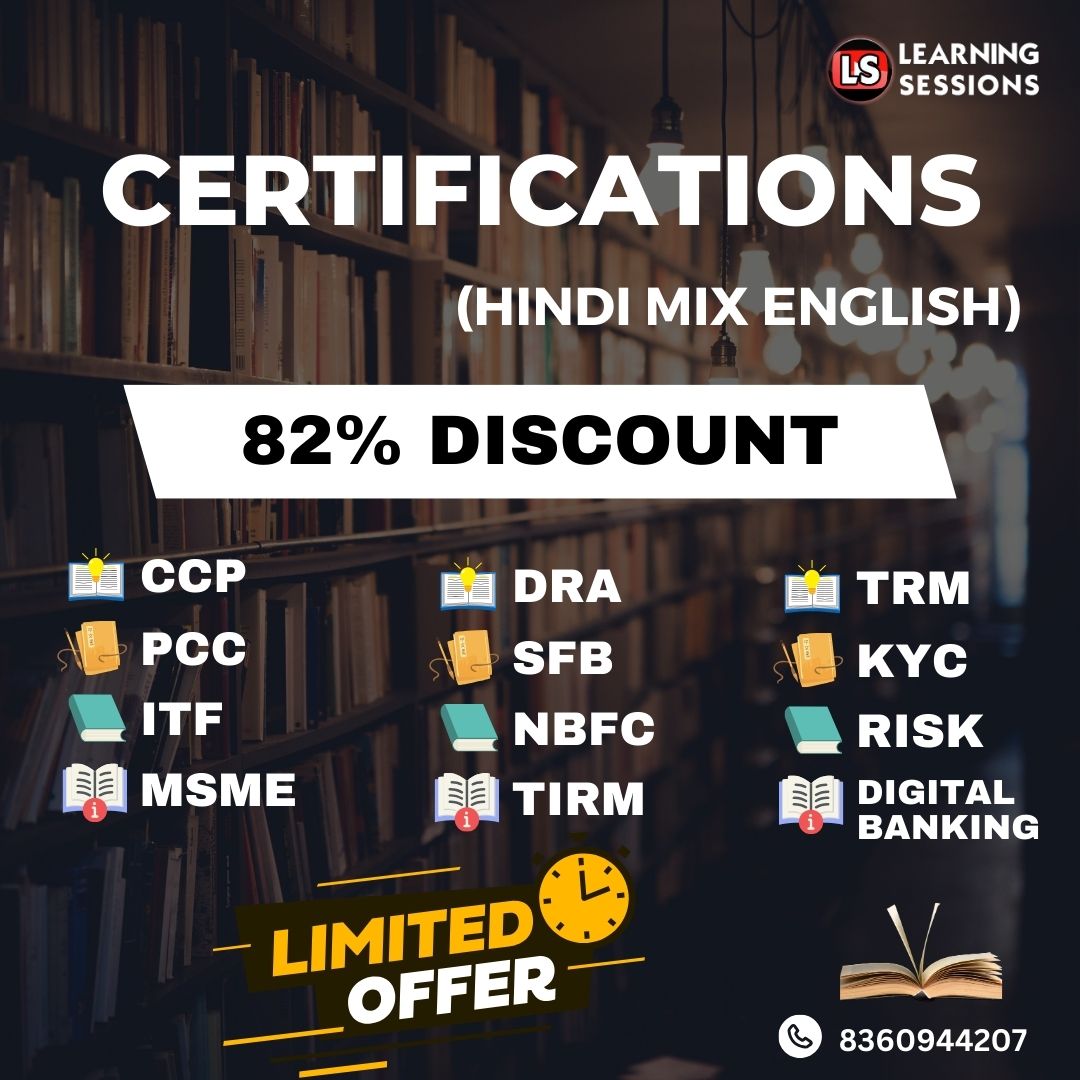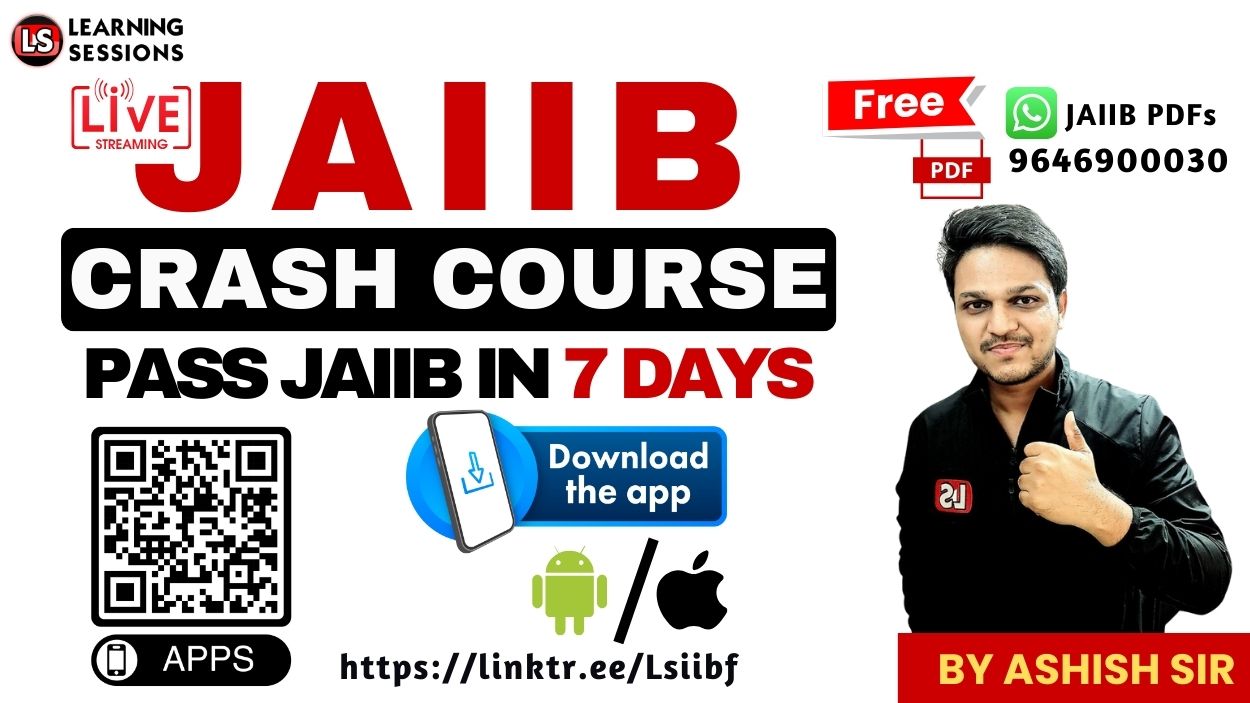Have you ever wondered why some businesses thrive despite tight finances while others struggle to stay afloat? The answer often lies in how well they manage their working capital. If you’re a banker preparing for the Certified Credit Professional (CCP) exam, understanding this concept isn’t just important — it’s essential!
In this video session, we break down one of the most crucial topics of the CCP syllabus: Working Capital Assessment. From its definition to practical examples, and from types and cycles to assessment methods — everything is covered in a simple Hindi-English mix to help you learn faster and retain better.
Whether you’re an aspiring CCP candidate, a working professional in the banking sector, or someone looking to sharpen their credit analysis skills, this video is tailor-made for you.
🎯 Watch till the end and share your learnings or questions in the comments! Let’s build a learning community together.
👉 Before we dive in, watch this video for a complete breakdown:
What is Working Capital? (00:00:29)
Working Capital is the fuel that keeps a business running daily. Imagine a furniture company that buys raw material, processes it into finished goods, and sells them. To manage all these steps — purchasing, production, marketing, and sales — the company needs funds. Those funds are called Working Capital.
Formula:
Working Capital = Current Assets – Current Liabilities
This simple calculation helps determine how much short-term financial health a company has. A positive working capital means smooth operations; a negative one signals trouble!
Long-Term vs Short-Term Financial Management (00:02:33)
- Long-term finance focuses on investments in fixed assets like land or machinery.
- Short-term finance deals with daily operations — cash, inventory, receivables.
Time Frame:
- Long-term: >1 year
- Short-term: <1 year or 1 operating cycle
Working Capital Cycle (00:03:32)
The Working Capital Cycle tells us how long a company takes to convert cash into raw materials, then into finished goods, then into sales, and finally back into cash.
Cycle Flow:
Cash ➡️ Raw Material ➡️ WIP ➡️ Finished Goods ➡️ Sale ➡️ Receivables ➡️ Cash
Shorter cycles = better liquidity = fewer funds required.
Types of Business Capital (00:05:41)
- Fixed Capital: For long-term investments (land, machinery)
- Working Capital: For day-to-day operations (wages, raw material, rent)
Concepts of Working Capital (00:06:10)
Gross Working Capital
Total investment in Current Assets.
Net Working Capital
Current Assets – Current Liabilities
- Positive NWC = Company is liquid
- Negative NWC = Liquidity issues
Importance of Net Working Capital (00:08:39)
- Ensures liquidity for daily obligations
- Helps handle financial shocks
- Improves creditworthiness
- Builds trust with lenders/investors
Strategies for Effective Working Capital Management (00:10:40)
- Optimize Inventory: Use Just-in-Time (JIT) methods
- Improve Receivable Collections: Offer early payment discounts
- Manage Payables Efficiently: Maintain supplier relationships
- Use Analytics & Forecasting Tools: Predict working capital needs in real-time
What is Working Capital Gap? (00:15:05)
Working Capital Gap = Current Assets – Current Liabilities (excluding bank finance)
Banks use this to assess how much funding the business really needs.
Components of Working Capital (00:17:57)
- Raw Material
- Work-in-Progress
- Finished Goods
- Trade Receivables
- Cash & Bank Balances
- Other Current Assets (like prepaid expenses)
Sources of Working Capital (00:24:23)
- Trade Payables
- Net Worth/Retained Profits
- Institutional Borrowings (Banks/NBFCs)
- Short-term loans or unsecured borrowings
Operating Cycle & Its Importance (00:26:28)
Defined under Companies Act 2013 as the time taken to acquire assets, process them, and convert them into cash.
Formula:
Operating Cycle = Inventory Conversion Period + Receivables Realization Period
Methods of Working Capital Assessment (00:32:02)
- Operating Cycle Method – Simple, for small businesses
- Traditional Method – For medium to large enterprises
- Projected Annual Turnover Method (PAT) – For MSMEs (<= ₹5 Cr limit)
- Tandon Committee Method – Earlier standard, now optional
- Assessed Bank Finance Method – Risk-based, for corporates
- Cash Budget Method – Seasonal businesses, based on cash inflow/outflow
Conclusion:
Understanding working capital is not just theory — it’s the heartbeat of every business. Whether you’re a banker assessing loan proposals or a CCP aspirant preparing for your exam, mastering this topic will give you a competitive edge.
Key Takeaway:
Working capital ensures business survival. Efficient management = better cash flow, less debt, and more growth!
Got questions or doubts? Drop them in the comments 👇 — and don’t forget to like, share, and subscribe for more such helpful content. Let’s crack the CCP exam together!
📥 Download the PDF Notes:
Download Working Capital Assessment Notes PDF
Also Like:







